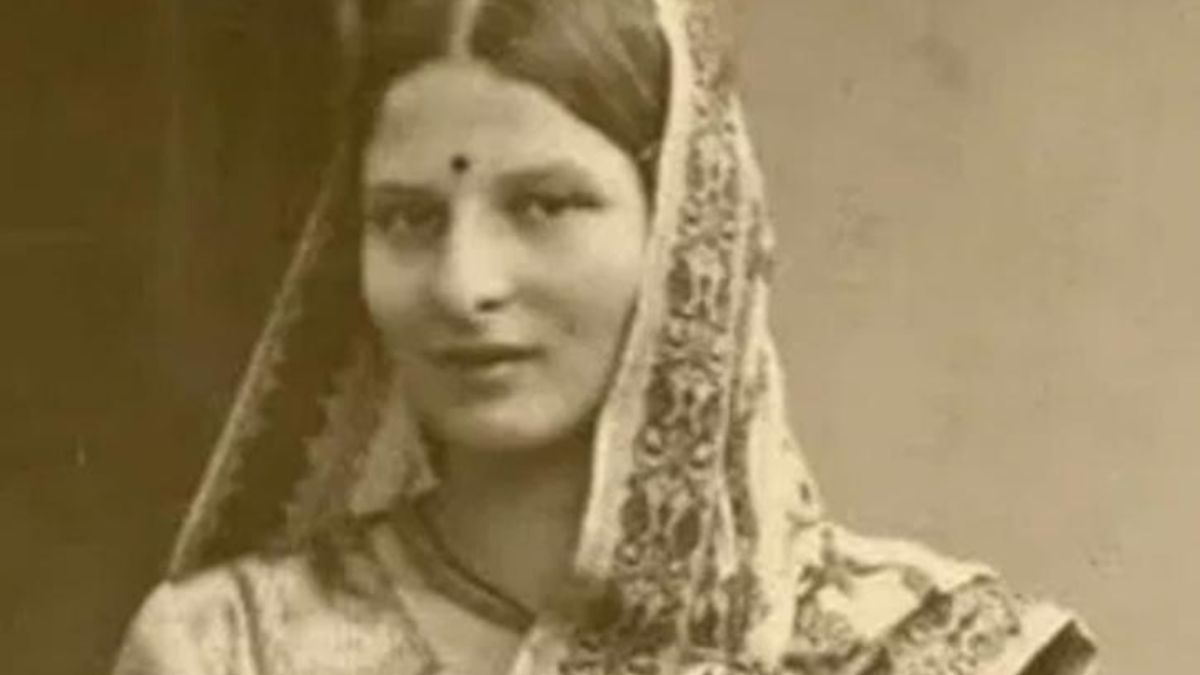In the annals of Indian military history, the Param Vir Chakra stands as the highest gallantry award, a symbol of ultimate bravery and sacrifice.
So far, the nation has honoured 21 war heroes with the Param Vir Chakra, including four brave soldiers from Kargil War. Captain Vikram Batra (posthumously), Rifleman Sanjay Kumar, Grenadier Yogendra Singh Yadav and Lt. Manoj Kumar Pandey (posthumously), who despite overwhelming odds, stood resolute against the enemy in the line of duty and were awarded the prestigious medal.
But did you know that the creative force behind this esteemed medal was Savitri Khanolkar, a Swiss-born woman whose own journey is as remarkable as the heroes who wear the award with pride.
Who was Savitri Khanolkar, and how did she come to design the Param Vir Chakra? Let’s delve into the fascinating story of her life and contribution.
1. Savitri Khanolkar, born Eve Yvonne Maday de Maros on July 20, 1913, in Neuchâtel, Switzerland. Her father, André de Maday, was a distinguished Hungarian professor of sociology at Geneva University, and her mother, Marthe Hentzelt, was a Russian educator at the Institut Jean-Jacques Rousseau in Geneva.
2. During WWII, Eve Yvonne Maday de Maro fell in love with Major General Vikram Khanolkar who was undergoing training at the Royal Military Academy, in the United Kingdom and was holidaying in Europe, according to The Times of India (TOI). Despite facing opposition from her family, Maros followed Khanolkar, moved to India a few years later, and made it her home. She later acquired the name Savitribai Khanolkar in 1932 after she married the Army officer in Mumbai.
Impact Shorts
More Shorts3. Despite being from a faraway land, Savitribai immediately felt a deep connection with India’s history and wholeheartedly immersed herself in the study of its mythology, traditions, and religious scriptures. She embraced a vegetarian lifestyle and became fluent in Marathi, Sanskrit, and Hindi, while also learning Indian music, dance, and painting.
“She always claimed that she had been ‘born in Europe by mistake’ as she was Indian soul, and would feel bad on anyone who dared to call her a foreigner,” retired Squadron Leader PA Pathreeker told the TOI.
4. It was Savitribai’s profound understanding of Indian culture and history that prompted Major General Hira Lal Atal to seek her assistance in designing a new medal for gallantry in combat after India gained independence in 1947. Tasked with creating India’s military award which would replace Britain’s Victoria Cross, Savitribai helped bring the medal to life.
5. According to a report by India Times, Savitribai Khanolkar drew inspiration from one of India’s greatest warriors, Chhatrapati Shivaji. To honour the Maratha warrior, she incorporated his legendary sword ‘Bhavani’ on both sides of the medal, encircled by the Hindu god Indra’s powerful mythic weapon ‘Vajra’.
As noted by the National War Memorial, Savirtribai was also inspired by a Vedic rishi, sage Dadhichi, who made the ultimate sacrifice by giving up his body so the Gods could forge the deadly weapon ‘Vajra’ or Thunderbolt from his spine.
7. The resulting design featured a circular bronze disc made of gunmetal, measuring 1.375 inches (3.49 cm) in diameter. This disc is suspended from a straight swiveling suspension bar and held by a 32 mm purple ribbon.
8. Coincidentally, the Param Vir Chakra, which was introduced on January 26, 1950, on the first Republic Day of India, was awarded to Savitribai’s elder daughter Kumudini Sharma’s brother-in-law Major Somnath Sharma of 4 Kumaon regiment. He was posthumously awarded for his valour during the 1947-48 Indo-Pak war in Kashmir.
9. In addition to the Param Vir Chakra, Savitribai also designed several other prestigious bravery medals. These include the Mahavir Chakra, the Vir Chakra, the Ashok Chakra, the Kirti Chakra, and the Shaurya Chakra.
10. Savitribai was deeply involved in social work, dedicating much of her later years to supporting soldiers, their families, and refugees displaced during the Partition. Following her husband’s death in 1952, she found solace in spirituality and joined the Ramakrishna Mission. Additionally, she authored a book ‘Saints of Maharashtra’, which remains popular to this day.
With input from agencies


)

)
)
)
)
)
)
)
)



